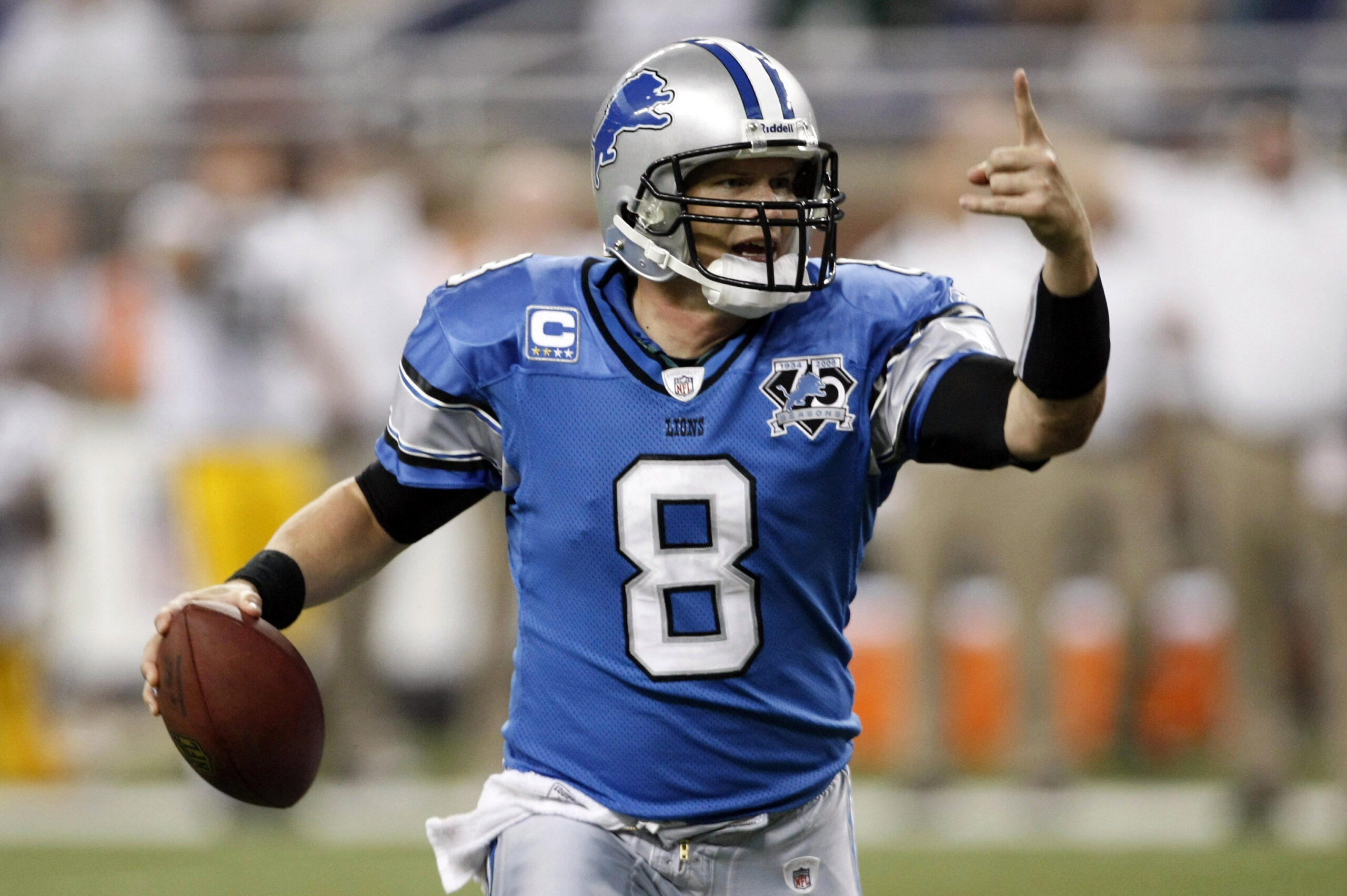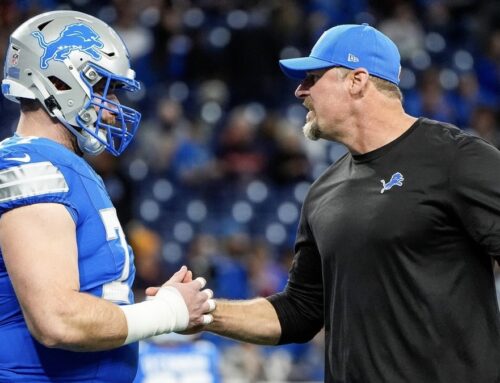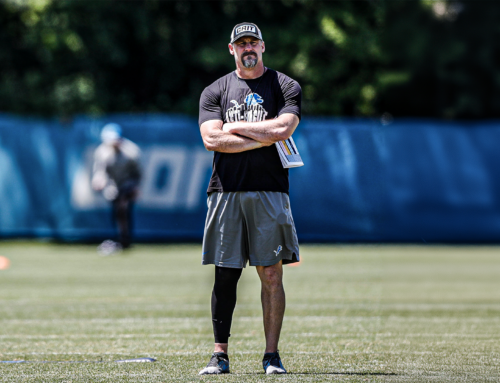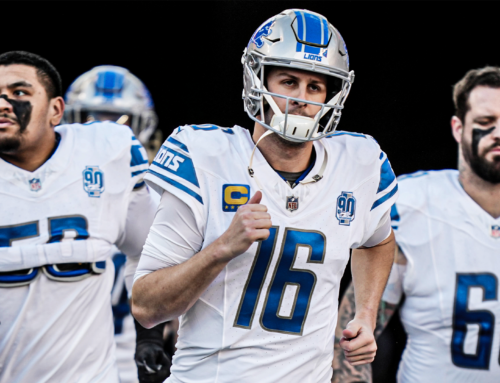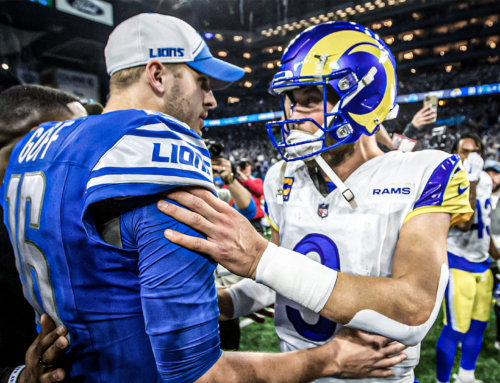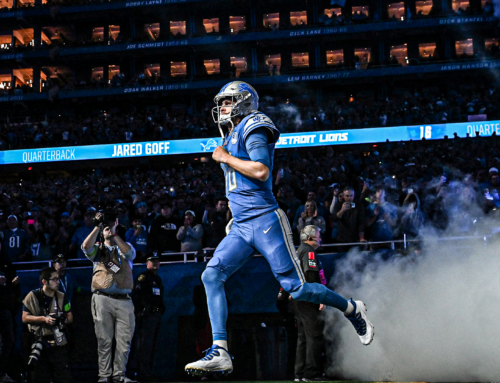“NFL Draft: Journey of Tyson Bagent typifies small school prospects” by Michael Marot
INDIANAPOLIS (AP) — Tyson Bagent played college football in relative obscurity.
At Shepherd University in West Virginia’s eastern panhandle, it would be easy to bypass this Division II school and its star quarterback. But when the New York Jets visited Shepherdstown in 2019, Bagent’s whole world changed.
Suddenly, the son of an international arm-wrestling champion saw the NFL become a realistic opportunity. Next week Bagent just might be the first Shepherd player drafted since the Houston Oilers took Wayne Wilson in the 12th round in 1979.
“I know I’m right where I’m supposed to be,” Bagent said. “I know I’m just as good as any quarterback in this draft class. And I know I have exactly what it takes to play at this level.”
Bagent Looks the Part
The strong-armed Bagent certainly looks the part at 6-foot-3, 213 pounds. He also has numbers that would make Bryce Young or C.J. Stroud jealous — completing 69.9% of his throws last season, setting a Division II career record with 17,034 yards and 159 TD passes, the most of any quarterback at any level in NCAA history.
And while Young won the 2021 Heisman Trophy, Bagent was busy winning the Division II equivalent — the Harlon Hill Trophy.
After dominating lesser competition, Shepherd QB Tyson Bagent hopes to be selected in the 2023 NFL Draft. Based on his scouting report, is he worth it? https://t.co/xVMxKUmZuY
— Pro Football Network (@PFN365) April 19, 2023
It explains why he was one of 15 quarterbacks invited to this year’s annual NFL scouting combine. Thanks to the alphabetical listing, he also received the coveted QB1 T-shirt. He hopes to keep that title in the NFL, if he can navigate yet another twist in a long, winding, lightly-recruited journey after winning two West Virginia state titles at Martinsburg High School. Nearby Shepherd University is roughly 155 miles east of Morgantown, about 75 miles northwest of Washington and 5 miles from Antietam Battlefield.
Plenty of Examples
There are plenty of encouraging examples for Bagent to lean on.
Nearly six dozen former Division II players made NFL rosters last season, including stars such as Tyreke Hill, Austin Ekeler and Matthew Judon.
Even at the sport’s most important position, the historical list of smaller school success stories includes NAIA alums Dave Krieg and Jon Kitna, Division III star Ken Anderson, Doug Williams from the FCS and James Harris, who played in the past NCAA small school College Division.
Bagent believes he could join the 1956 Baltimore Colts 28th-round pick John Shearer as the only quarterbacks taken from Shepherd — the same alma mater of longtime Colts executive vice president, the now-retired Bob Terpening.
“I come from a D2 school but I’m not a D2-caliber player,” he said. “I’m the same caliber as anybody else in this (draft class). I’m counting down the days to where nobody has to wear a lanyard that says where you’re from.”
Not the Only Unknown
Bagent isn’t the only unknown trying to make it big this year.
Offensive lineman McClendon Curtis of Chattanooga and edge rusher Caleb Murphy of Ferris State also are part of the club. Receiver Andrei Iosivas of Princeton hopes to add another chapter to the Tigers’ recent strong tournament performances in men’s and women’s basketball.
NFL Draft fans, get familiar with the name of @PrincetonFTBL WR Andre Iosivas (pronounced yo-shee-vahs). You’ll be hearing it a lot during pre-draft process. pic.twitter.com/GbW80FWxhD https://t.co/7fFm9dxN2d
— Jim Nagy (@JimNagy_SB) October 31, 2022
Linebackers Aubrey Miller Jr. of Jackson State and Isaiah Land of Florida A&M, offensive lineman Mark Evans II of Arkansas-Pine Bluff and receiver Dallas Daniels, Miller’s teammate, hope to add their names to the long list of Historically Black College and University pro stars.
Then there’s the Division II contingent led by Bagent and four offensive linemen — teammate Joey Fisher, Quinton Barrow of Grand Valley State, Jake Witt of Northern Michigan and Jacky Chen, who could be the first draft pick to come from Pace University in New York City.
They all know the challenge.
“I have to do a little bit more,” Evans said. “When I’m coming from a smaller school, playing big games, versus bigger competition, I’m trying to go out there and put on a show because those are the games you know they’ll be watching.”
While some are projected to be selected ahead of Bagent, a late-round prospect in the NFL Draft, few possess the kind of credentials that nearly landed Bagent at Maryland or West Virginia before last season.
Declining to Transfer
Instead, he declined to transfer, earning a degree from Shepherd like his parents while making his school a must-see destination for scouts ahead of the NFL draft.
“I would have had to repeat a year, a year and a half of classes and the whole unknown of that is that no situation is as good as they make it seem. I’m old enough to know that,” said Bagent about his reasoning. “My grandfather was sick. He was a big part of my academic success and he wanted to see me graduate. I knew if I transferred, that wasn’t going to happen.”
Now the goal has changed again.
Rather than challenging his exuberantly funny father, Travis, to an arm-wrestling match, the younger Bagent wants to show NFL scouts he possesses enough raw talent to give him a shot.
Sure, there will be growing pains. But Bagent insists he can beat the odds as he’s done over the last five seasons. If someone gives him a chance.
“I’ve always felt, for whatever reason, it was within my grasp. Even when that was probably kind of ridiculous considering where I come from,” he said. “After winning the D2 Heisman, when I started working with quarterback trainers, they clarified that I didn’t just look the part but I am the part when it comes to footwork, my IQ of the game. I’m as ready as anybody else, if not more.”
___
Author: Michael Marot, The Associated Press
Photo Credit: © Leon Halip-USA TODAY Sports
Tweet:@WoodwoodSports or comment on your favorite social media platform ahead of the NFL draft!

